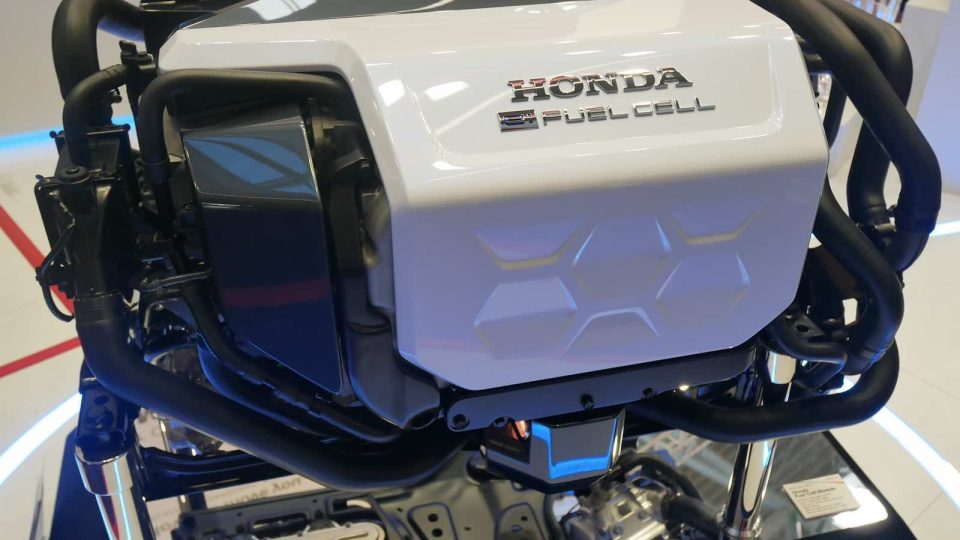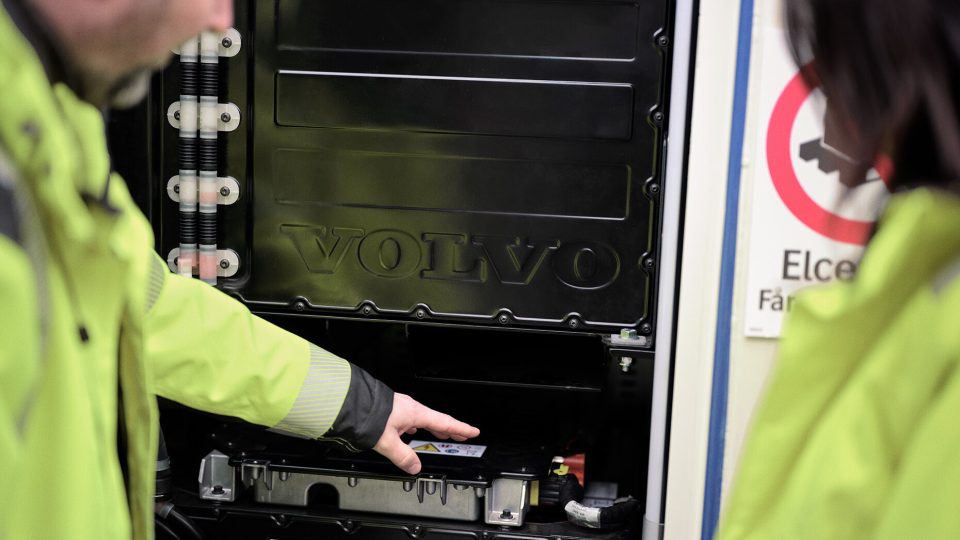Kubota V1505 and WG1903
Kubota V1505 Kubota V1505, 1.5 liters in 4 cylinders. Another interpretation of the concept of super-compact. Because at Intermat, Kubota did not limit itself to flaunting the 09 series, i.e. the 5-liter and the just introduced 4.3. They also displayed their segmentation strategies. Tony Tonegawa, Vice President of the Engine Europe Business Unit, had anticipated […]
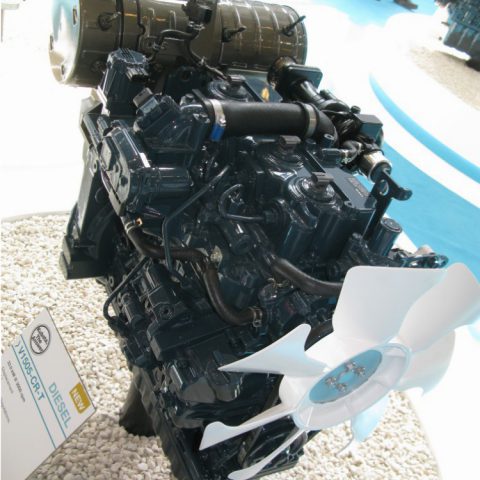
Kubota V1505
Kubota V1505, 1.5 liters in 4 cylinders. Another interpretation of the concept of super-compact. Because at Intermat, Kubota did not limit itself to flaunting the 09 series, i.e. the 5-liter and the just introduced 4.3. They also displayed their segmentation strategies.
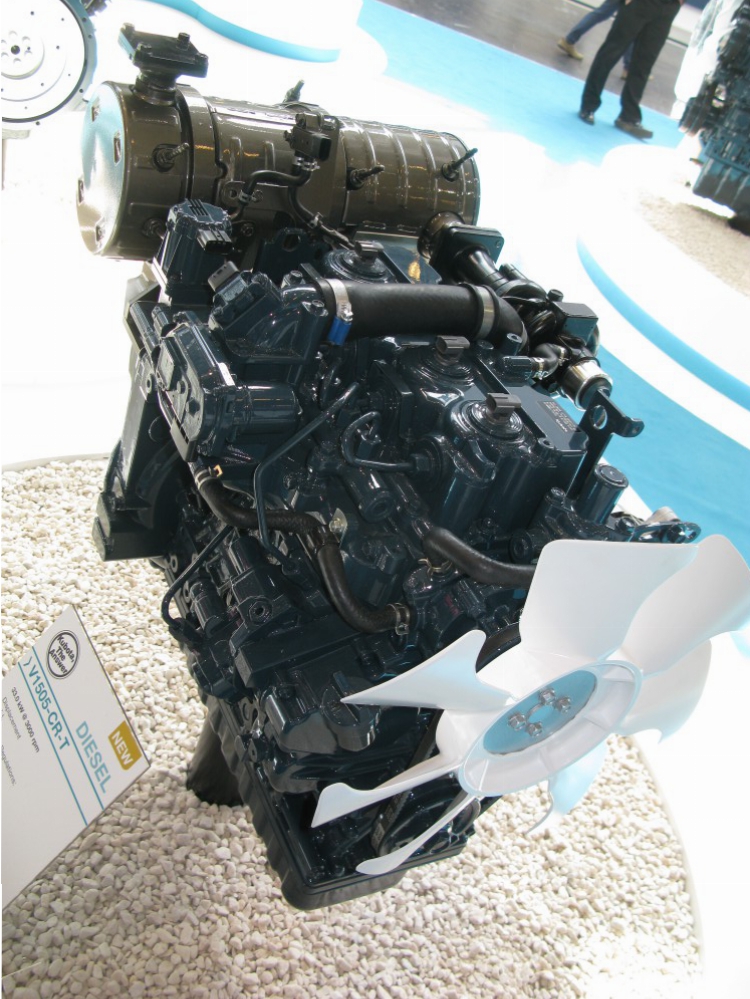
Tony Tonegawa, Vice President of the Engine Europe Business Unit, had anticipated this in an interview released for DIESEL. «60 percent of global sales of Kubota engines are in fact represented by OEMs. Today we are the first manufacturer of engines for the off-road segment in the range under 73.5 kilowatts (the threshold of 100 horses, e.n.). The Division’s objective is to further expand our solution proposal and expand our business areas both within the existing market and in new markets».
Segmentation
Segmentation to retain OEMs is a common practice. And it is the same logic that governs the conception of this ultra-compact. A 4-cylinder architecture with a unit displacement of 375 cubic centimeters is not that ordinary. If we take for granted that the Japanese technological/stylistic approach is traditionally conservative, then in Osaka they have evidently decided to amaze.
Kubota V1505 CR-T is an exemplary expression of the new motoring paradigms. All in one engine. A 4-stroke vertical supercharged diesel engine that delivers 33 kilowatts to 3,000 rpm, with a maximum torque of 118.5 Newton-meter. Performs like a classic 4 cylinders with automotive-like cylinder liner (between 2 and 2.2 liters). Downsizing is, in this case, definitely an option. LxWxH respectively measure 766 x 466 x 686 mm. The dry weight is 169 kilograms.
After-treatment system
Kubota V1505 series (BxS 78×78.4 mm) comes with a catalyst for HCs, ie Doc, and a diesel particulate filter. The range between 19 and 36 kilowatts will in fact fall under the Stage V regulations. Production will be fully operational by 2020.
The 1.5 liter mainly targets OEMs who work with small earth-moving and municipal machines (maintenance and cleaning of roads and public parks).
Segmentation does not apply only to applications involving diesel power. At least not in Kubota’s strategy. In Osaka, they have enriched the offer of ‘multi-fuel’ engines. Lpg, gasoline, natural gas, and dual-fuel are the available options.
WG1903
Tonegawa’s words also introduce the second element of innovation among the super-compact that Kubota has shown in Paris. «Kubota is one of the few to offer alternative power options from the diesel base. There is a clear market trend oriented towards the use of our LSI engines not only in indoor applications. Many large cities such as Paris and London are today banning diesel».
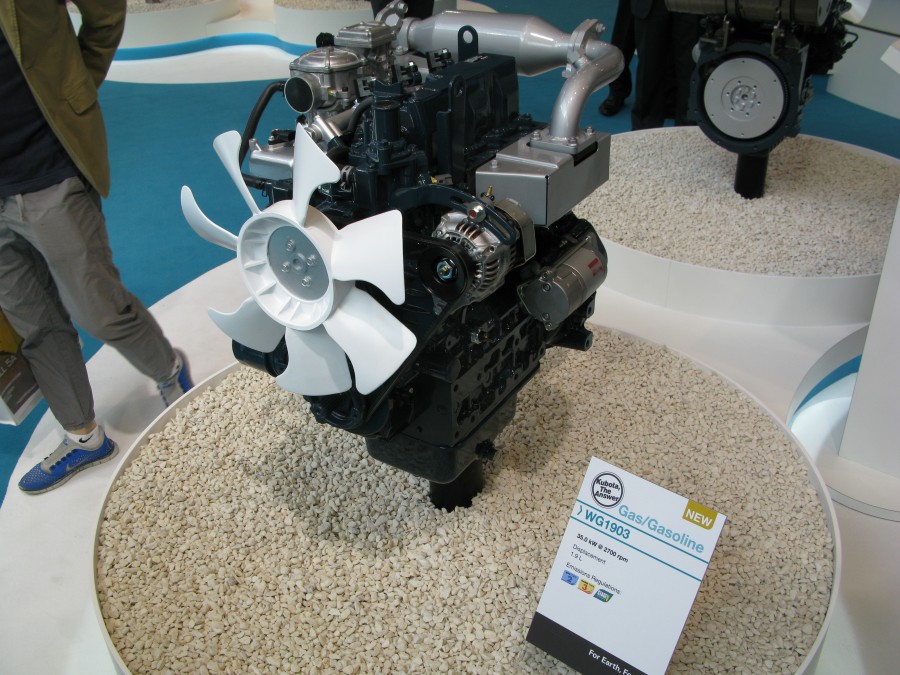
Daniel Grant, marketing manager for Kubota Business Unit Engine Europe, also commented on the WG1903. «With so many OEMs looking at solutions that are Stage V compliant ahead of 2019, Kubota is answering a wide variety of client needs. The new WG1903 is just one of those solutions».
The WG1903 is a 1.9-liter, 3-cylinder that Kubota specifically designed with the capability to work with Lpg, gasoline, natural gas and dual fuel. It has intake system and a three-way catalyst. It can deliver 35 kilowatts at 2,700 rpm, with a torque of 140 Newton-meter at 1,400. The design mission remains that of replicating curves and dimensions of the equivalent diesel models. In these terms, Kubota compares the WG1903 GL to the D1803-Cr-T.




